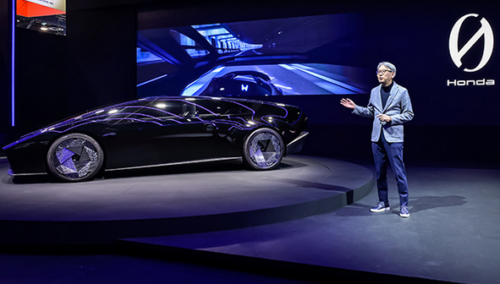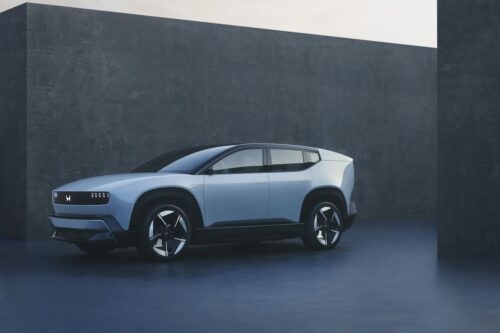The gravity propulsion claims in Matthew Livelsberger’s communications merit separate analysis from his testimony about civilian casualties in Afghanistan. This distinction is crucial not only for evaluating his important evidence of war crimes but also for understanding current drone operations security.
Claims about gravity control propulsion systems require extraordinary scrutiny because they don’t just suggest advanced engineering – they imply a fundamental revolution in physics that lacks the observable development patterns, infrastructure requirements, and technology supply chains that accompany all major physics breakthroughs. This isn’t merely unlikely; it represents a fundamental misunderstanding of how scientific advancement works.
Our current understanding of gravity comes from Einstein’s General Relativity, one of the most thoroughly tested theories in history. Any gravity control system would require either overturning General Relativity, finding fundamental physical mechanisms that have left no trace in any experimental data or theoretical frameworks despite decades of careful measurement and testing, or developing engineering capabilities that bridge enormous theoretical gaps. The closest historical research programs, like the Air Force’s gravity research in the 1950s-70s, produced valuable theoretical work on conventional gravitational effects (like Kerr’s discoveries about rotating masses) but found no pathway to gravity control.
Modern attempts to unify gravity with quantum mechanics – arguably the largest effort in theoretical physics – still struggle with basic questions about gravity’s nature. The idea that classified military research has solved these fundamental questions while leaving no trace in material supply chains, engineering education, or infrastructure development contradicts all historical patterns of technological advancement.
Even if we entertained the possibility of a gravity control breakthrough, implementing it would require a massive scientific and engineering infrastructure, supply chains for exotic materials and components, testing facilities and programs, training programs for operators and maintenance personnel, and fundamental changes to aerospace engineering education. The scale of such an enterprise would be impossible to completely hide.
For comparison, when the Manhattan Project developed nuclear weapons, despite wartime secrecy, thousands of physicists knew the theoretical possibility, the broader scientific community understood the underlying principles, and multiple nations were pursuing similar research. No comparable foundation exists for gravity control technology.
This makes gravity propulsion claims particularly useful for very targeted counterintelligence purposes. They’re superficially plausible to non-experts yet effectively impossible to disprove (unlike claims about conventional technology). They map onto existing UFO and advanced technology beliefs, and they’re so extraordinary that they undermine the credibility of any associated claims. This pattern appears repeatedly in intelligence history. The now famous U-2 program long ago benefited from UFO speculation when stealth technology development was obscured by absurd claims. Advanced drone programs often attract similar technological mythology for similar reasons.
The U-2 case is particularly instructive because it shows how counterintelligence operations deliberately introduced fantastic elements to protect real classified technology. When civilian pilots reported strange aircraft at impossible altitudes, the Air Force would provide multiple, often contradictory explanations ranging from weather balloons to hints of more exotic possibilities. This created a ‘noise floor’ of speculation that effectively discredited legitimate observers by associating their accurate observations with increasingly outlandish claims.
This pattern of introducing fantastic elements to discredit legitimate observers has claimed numerous whistleblowers before Livelsberger. WWII British Naval Intelligence under Godfrey and Fleming used a “double cross system” – varying fake details were inserted into real documents about convoys to detect which German spies were active in specific regions, based on which version of the false information showed up in intercepted communications. In the 1990s, several Gulf War veterans who raised concerns about chemical weapons exposure found their legitimate medical complaints becoming entangled with increasingly exotic theories about secret weapons testing.
Livelsberger’s case follows a well documented progression. His detailed, verifiable testimony about drone strikes and civilian casualties has become intermixed with gravity drive claims in a way that mirrors these historical cases. The key difference is that modern counterintelligence operations maybe have become sophisticated at exploiting integrity vulnerabilties — using combat trauma such as TBI to accelerate a process of narrative contamination. While previous cases often relied on external social pressure and deliberate contradiction to introduce doubt, Livelsberger’s communications suggest a more insidious approach that leverages mental harm and psychological suffering to blur the line between direct observation and introduced fantasy.
This vulnerability-based targeting becomes particularly concerning when we consider the timeline of Livelsberger’s service. His record suggests someone whose moral objections to civilian casualties made him a potential risk for whistleblowing. The introduction of exotic technical elements into his narrative may represent a calculated attempt to force him out of operations through an early retirement on disability status – a modern evolution of old counterintelligence tactics that exploit rather than surveil potential whistleblowers.
If this was indeed the strategy, it backfired tragically. Rather than quietly accepting a glass ceiling leading to medical discharge, Livelsberger appears to have recognized attempted interference and manipulation. His final communications suggest someone who, despite or perhaps because of his combat trauma, maintained enough clarity to provide separate claims. He gave both direct observations of war crimes, as well as exotic claims he was being fed. His choice of suicide while explicitly providing testimony about civilian casualties regardless of the gravity drives suggests a determined effort to ensure his credible core evidence wouldn’t be lost under plausibility of technological revolution.
Meanwhile, modern drone operations face genuine security challenges around detection and tracking capabilities, counter-drone technologies, command and control security, autonomous systems limitations, international airspace regulations, and civilian oversight mechanisms. These real operational concerns, and likely exploits, require serious analysis. Claims about gravity propulsion not only distract from actual drone advanced capabilities but also from legitimate questions about autonomous systems, civilian oversight, and accountability in targeted strikes.
For the national security community, separating these narratives is crucial because Livelsberger’s testimony about civilian casualties in Afghanistan aligns with UN ground investigations, Brown University casualty data, known changes in ROE and reporting requirements, and documented operational patterns. His descriptions of drone operations reflect standard military procedures, known technical capabilities, established command structures, and verifiable policy changes. The gravity propulsion claims, by contrast, show classic signs of introduced disinformation through physically impossible capabilities, absence of supporting infrastructure, and violation of known scientific principles.
Understanding how gravity propulsion claims function as interference helps clarify both the credibility of Livelsberger’s core testimony and the ongoing challenges in drone operations security. It demonstrates why extraordinary claims about breakthrough technologies should be evaluated against the required scientific infrastructure, the broader research community’s knowledge, the physical principles involved, and the historical patterns of similar claims.
When evaluating whistleblower testimony about classified programs, distinguishing between operational reality and introduced disinformation remains essential. Claims that require overturning fundamental physics deserve particular skepticism, especially when they appear alongside more credible testimony about conventional operations and policy violations. This separation allows proper attention to both the serious evidence of civilian casualties and the real technical and ethical challenges in current drone operations – without being diverted by speculation about impossible technologies.
References:
- Experimental evidence: None exists demonstrating controlled modification of gravitational fields beyond natural mass-energy effects
- Theoretical framework: Einstein’s Theory of General Relativity – our most thoroughly tested theory of gravity – demonstrates that gravity is not a force that can be “canceled” but rather the curvature of spacetime itself caused by mass-energy
- Mathematical proof: Forward, R.L. (1963). “Guidelines to Antigravity,” American Journal of Physics, Vol. 31, pp. 166-170. Mathematical demonstration that any practical antigravity device would violate fundamental laws of energy conservation.
- Engineering analysis: Bertolami, O., & Pedro, F.G. (2005). “Gravity Control Propulsion: Towards a General Relativistic Approach.” Instituto Superior Técnico, Departamento de Física, Lisboa, Portugal.
Understanding our calculation as the energy that must be spent to control a region of space-time, leads to a radically different conclusion. From this point of view, gravity manipulation is an essentially unfruitful process for propulsion purposes.
- Engineering analysis: Dröscher & Hauser (2009). “Gravitational Field Propulsion“, cites Tajmar’s definitive conclusion:
Even if modified gravitational laws existed, their usage for space propulsion is negligible… nothing has been uncovered to allow any action-at a-distance force field for space propulsion in interplanetary or interstellar space.






